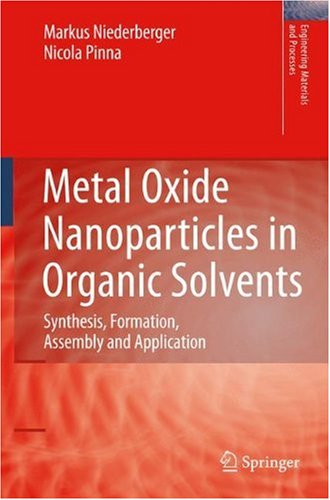

Most ebook files are in PDF format, so you can easily read them using various software such as Foxit Reader or directly on the Google Chrome browser.
Some ebook files are released by publishers in other formats such as .awz, .mobi, .epub, .fb2, etc. You may need to install specific software to read these formats on mobile/PC, such as Calibre.
Please read the tutorial at this link: https://ebookbell.com/faq
We offer FREE conversion to the popular formats you request; however, this may take some time. Therefore, right after payment, please email us, and we will try to provide the service as quickly as possible.
For some exceptional file formats or broken links (if any), please refrain from opening any disputes. Instead, email us first, and we will try to assist within a maximum of 6 hours.
EbookBell Team

4.7
66 reviewsThe synthesis of nanoparticles with control over particle size, shape, and crystalline structure, has long been one of the main objectives in chemistry – and yet these materials are only beginning to be used in nanotechnology. Metal oxides play a significant role in many fields of technology including catalysis, sensing, energy storage and conversion, and electroceramics. It is expected that they could show enhanced or even new properties at the nanoscale. Metal Oxide Nanoparticles in Organic Solvents discusses recent advances in the chemistry involved for the controlled synthesis and assembly of metal oxide nanoparticles, the characterizations required by such nanoobjects, and their size and shape depending properties.
Innovative strategies have to be developed to allow good control from the molecular precursor to the final product at low processing temperatures. In the last few years, a valuable alternative to the well-known aqueous sol-gel processes was developed in the form of nonaqueous solution routes, which can roughly be divided into two methodologies; namely surfactant- and solvent-controlled preparation routes. Metal Oxide Nanoparticles in Organic Solvents reviews and compares surfactant- and solvent-controlled routes, as well as providing an overview of the most important techniques for the characterization of metal oxide nanoparticles, crystallization pathways, the physical properties of metal oxide nanoparticles, their applications in diverse fields of technology, and their assembly into larger nano- and mesostructures.
Researchers and postgraduates in the fields of nanomaterials and sol-gel chemistry will appreciate this book’s informative approach to chemical formation mechanisms in relation to metal oxides.